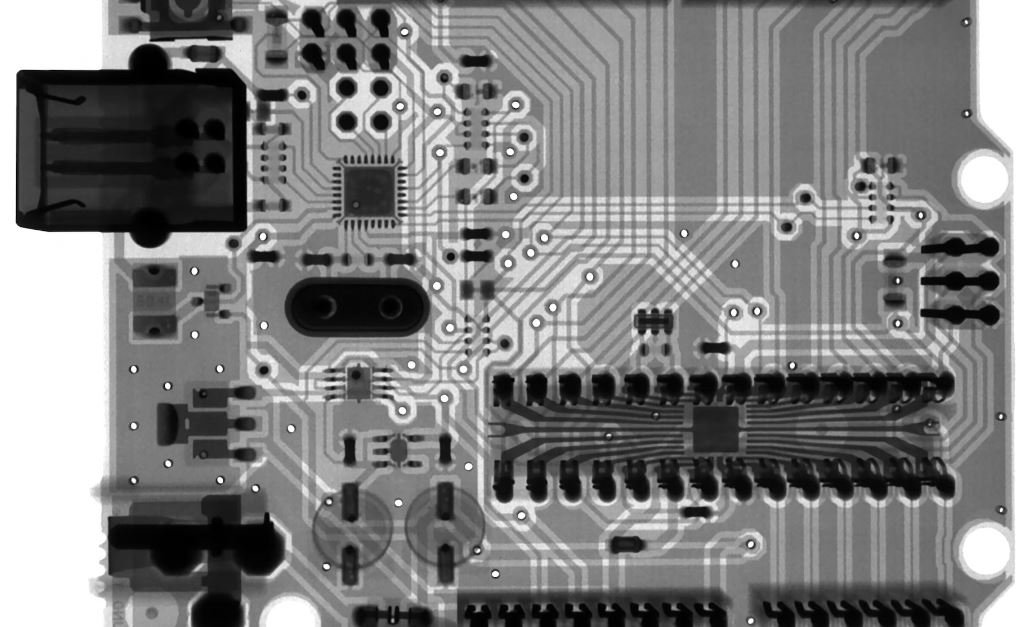Tesla Model S Maintenance Schedule
When it comes to the maintenance of a Tesla Model S, following a proper schedule is essential to keep your electric vehicle (EV) in optimal condition. Regular maintenance not only ensures the longevity of the car but also contributes to its overall performance. In this article, we will outline a maintenance schedule that covers various aspects of caring for a Tesla Model S.
Key Takeaways
- Regular maintenance is crucial for keeping your Tesla Model S in top shape.
- Following the manufacturer’s recommended schedule provides peace of mind.
- Inspecting the key components and addressing issues promptly is essential.
Just like any other vehicle, your Tesla Model S requires regular check-ups and maintenance to ensure its smooth operation. **Regular maintenance includes tasks such as tire rotation, brake inspection, and fluid level check**. By adhering to the recommended maintenance schedule provided by Tesla, you can avoid potential problems and extend the life of your electric vehicle.
**One interesting fact about electric vehicles is that they come with fewer moving parts, reducing the overall maintenance requirements compared to traditional gasoline-powered cars**. However, certain components like tires and brakes still need periodic evaluation and attention to ensure optimum performance.
Maintenance Schedule
Outlined below is a general maintenance schedule for your Tesla Model S:
- Every 7,500 miles or 1 year: Tire rotation, wheel alignment check, brake fluid replacement, and air conditioning service.
- Every 25,000 miles or 2 years: Cabin air filter replacement.
- Every 50,000 miles or 4 years: Battery coolant replacement.
**Regular tire rotation helps to ensure even wear, prolonging the life of your tires and enhancing vehicle stability**. Wheel alignment checks are necessary to maintain proper alignment, which affects the handling and fuel efficiency of your Tesla Model S. Replacing the brake fluid every 2 years keeps the braking system in peak condition.
| Maintenance Task | Interval |
|---|---|
| Tire Rotation | Every 7,500 miles or 1 year |
| Wheel Alignment Check | Every 7,500 miles or 1 year |
| Brake Fluid Replacement | Every 7,500 miles or 1 year |
| Air Conditioning Service | Every 7,500 miles or 1 year |
| Cabin Air Filter Replacement | Every 25,000 miles or 2 years |
| Battery Coolant Replacement | Every 50,000 miles or 4 years |
Inspecting Key Components
Aside from following the routine maintenance tasks, it is essential to regularly inspect major components of your Tesla Model S to address any potential issues. **Checking the condition of the battery, the brake pads, and the state of the charging system are crucial for overall vehicle performance**. If you notice anything out of the ordinary or experience functional concerns, make sure to consult a certified Tesla technician for proper diagnosis and repairs.
Increased awareness and thorough inspection help maintain a reliable and efficient EV. **It is worth noting that Teslas have built-in diagnostic features that provide real-time information about the health and performance of various vehicle systems**. Utilizing these diagnostic tools can help identify any underlying issues early on, leading to timely resolutions and preventing costly repairs.
Maintaining Your Investment
Your Tesla Model S is a significant investment, and by following a proper maintenance schedule, you can ensure its longevity and preserve its value. Regular check-ups, adherence to the recommended maintenance tasks, and addressing any potential issues promptly will keep your electric vehicle running smoothly.
By maintaining your Tesla Model S, you can enjoy the benefits of electric driving for years to come.

Common Misconceptions
There are several common misconceptions surrounding the maintenance schedule of the Tesla Model S. In this section, we will debunk these myths and provide accurate information about the maintenance requirements of this electric vehicle.
Myth 1: Tesla Model S requires frequent maintenance
- The Tesla Model S has fewer moving parts compared to traditional internal combustion engine vehicles, resulting in fewer components that require frequent maintenance.
- The recommended maintenance schedule for the Model S includes basic tasks like tire rotations and cabin air filter replacements, which are similar to those of other vehicles.
- However, the absence of oil changes and other fluid replacements usually associated with gasoline cars makes the overall maintenance frequency lower for the Tesla Model S.
Myth 2: Tesla Model S maintenance is expensive
- Contrary to popular belief, owning a Tesla Model S does not necessarily mean higher maintenance costs.
- Although some replacement parts for the Model S may be pricier due to the car’s advanced technology, the absence of frequent oil changes and fluid replacements actually results in cost savings over time.
- Additionally, Tesla’s warranty and service plans can help to further reduce maintenance costs and provide peace of mind.
Myth 3: Third-party mechanics cannot service the Tesla Model S
- While it is true that Tesla recommends servicing your Model S at their authorized service centers, third-party mechanics who specialize in electric vehicles can also perform maintenance tasks.
- However, it is crucial to ensure that the mechanic has the necessary expertise and access to Tesla-specific diagnostic tools to properly service the vehicle.
- Choosing an experienced and reputable third-party mechanic can be a cost-effective alternative for routine maintenance if there are no authorized service centers nearby.
Myth 4: Tesla Model S maintenance is time-consuming
- Due to its unique design and technology, the Tesla Model S actually requires less time for maintenance compared to traditional vehicles.
- There are no oil changes, spark plug replacements, or timing belt adjustments needed, which significantly reduces the overall maintenance time.
- Regular software updates can often be done remotely, saving you the hassle of visiting a service center in person.
Myth 5: Neglecting maintenance won’t impact the Tesla Model S
- While the Model S requires less maintenance than traditional cars, neglecting regular maintenance can still have detrimental effects on its performance and longevity.
- Regular maintenance, such as tire rotations, brake inspections, and battery health checks, is essential to ensure optimal performance, safety, and to address any potential issues early on.
- Following the manufacturer’s recommended maintenance schedule is crucial to keep your Tesla Model S in top condition and maximize its lifespan.

Tesla Model S Maintenance Schedule
The Tesla Model S is an all-electric luxury sedan known for its high performance and cutting-edge technology. To ensure the longevity and optimal performance of this innovative vehicle, following a regular maintenance schedule is vital. The table below outlines the various maintenance tasks and their recommended intervals for Tesla Model S owners.
Recommended Maintenance Intervals for Fluids
Regular maintenance of fluids is essential for the smooth operation of any vehicle. The following table details the recommended intervals for checking and changing fluids in a Tesla Model S.
| Fluid | Recommended Interval |
|---|---|
| Battery Coolant | Every 4 years or 50,000 miles |
| Brake Fluid | Every 2 years or 25,000 miles |
| Windshield Washer Fluid | Whenever necessary |
Tire Maintenance Schedule
Proper tire maintenance ensures safety and improves fuel efficiency. Refer to the table below for the recommended actions and intervals to maintain your Tesla Model S tires.
| Maintenance Task | Recommended Interval |
|---|---|
| Tire Pressure Check | Monthly |
| Tire Rotation | Every 10,000-12,000 miles |
| Wheel Alignment | As needed or every 20,000-25,000 miles |
Battery and Charging Maintenance
The heart of the Tesla Model S is its battery pack. The table below provides maintenance recommendations for ensuring optimal battery performance and longevity.
| Maintenance Task | Recommended Interval |
|---|---|
| Battery Software Updates | As prompted by Tesla |
| Battery Inspection | Every 4 years or 50,000 miles |
| Charging Port Cleaning | Monthly |
Interior Maintenance Schedule
Keeping the interior of your Tesla Model S clean and well-maintained contributes to the overall driving experience. Refer to the table below for recommended interior maintenance tasks and intervals.
| Maintenance Task | Recommended Interval |
|---|---|
| Interior Cleaning (including seats, dashboard, and carpets) | As needed |
| Screen Cleaning | Monthly |
| Seat Belt Inspection | Every 2 years or 25,000 miles |
Exterior Maintenance Schedule
Maintaining the exterior of your Tesla Model S not only enhances its appearance but also protects it from wear and tear. The following table presents the recommended exterior maintenance tasks and their intervals.
| Maintenance Task | Recommended Interval |
|---|---|
| Car Wash | As needed |
| Paint Inspection | Every 2 years or 25,000 miles |
| Window and Headlight Cleaning | Monthly |
Brake Maintenance Schedule
Brakes are a critical component of any vehicle, and regular maintenance ensures their optimal functionality. Refer to the table below for Tesla Model S brake maintenance recommendations.
| Maintenance Task | Recommended Interval |
|---|---|
| Brake Pad Inspection | Every 12,000-20,000 miles |
| Brake Rotor Inspection | Every 12,000-20,000 miles |
| Brake Fluid Change | Every 2 years or 25,000 miles |
HVAC System Maintenance Schedule
To ensure optimal comfort and performance, the HVAC system in your Tesla Model S requires periodic maintenance. The table below outlines the recommended tasks and intervals for maintaining the HVAC system.
| Maintenance Task | Recommended Interval |
|---|---|
| Cabin Air Filter Replacement | Every 2 years or 25,000 miles |
| HVAC System Inspection | Every 2 years or 25,000 miles |
| AC Recharge | As needed |
Software Updates
Software updates are regularly released by Tesla to improve the performance and add new features to your Model S. Stay up to date with the following table indicating the frequency of software updates.
| Software Update | Frequency |
|---|---|
| Major Feature Update | Every 1-2 years |
| Minor Bug Fixes and Improvements | Every 3-4 months |
| Security Updates | As needed |
Conclusion
The Tesla Model S is not only a technologically advanced electric vehicle but also requires proper maintenance to ensure its longevity and optimal performance. Following the recommended maintenance intervals for various components and systems, such as fluids, tires, batteries, interior, exterior, brakes, HVAC, and software updates, is crucial for a smooth ownership experience. By adhering to a meticulous maintenance schedule, Tesla Model S owners can fully appreciate the remarkable engineering and innovation behind their electric sedan.
Frequently Asked Questions
Q: What is the recommended maintenance schedule for the Tesla Model S?
A: The recommended maintenance schedule for the Tesla Model S includes annual inspections and regular service intervals of approximately every 12,500 miles or as indicated on the vehicle’s display.
Q: What does the annual inspection involve?
A: The annual inspection involves a comprehensive check of various components of the Tesla Model S, including the brakes, suspension, battery, tires, and overall condition of the vehicle. It is a thorough assessment to ensure proper functioning and address any potential issues.
Q: How often should I rotate the tires on my Tesla Model S?
A: Tesla recommends rotating the tires on your Model S every 10,000 to 12,000 miles, or as needed based on the wear pattern. Regular tire rotations help ensure even tread wear and prolong the lifespan of your tires.
Q: Do I need to change the brake pads on my Tesla Model S?
A: Tesla uses regenerative braking technology in their Model S, which helps minimize wear on the brake pads. However, eventual brake pad replacement may still be necessary depending on driving conditions and individual usage. It is essential to have your brake system regularly inspected during routine maintenance checks.
Q: When should I replace the battery of my Tesla Model S?
A: The Tesla Model S has a long-lasting battery life, but eventually, battery degradation may occur over time. Tesla recommends monitoring battery health through regular software updates and consulting with a Tesla Service Center to assess the need for replacement.
Q: How often should I service the air conditioning system in my Tesla Model S?
A: Tesla recommends servicing the air conditioning system in your Model S every two years or as needed. Regular maintenance ensures optimal performance and efficiency of the cooling system.
Q: Are there any specific fluids that require regular maintenance in the Tesla Model S?
A: The Tesla Model S does not utilize traditional fluids, such as engine oil or transmission fluid, but it is essential to check and maintain the coolant and windshield washer fluid levels periodically. Tesla’s service team can assist you with these tasks during routine maintenance visits.
Q: Can I perform maintenance and repairs on my Tesla Model S myself?
A: While some basic maintenance tasks, such as tire rotations and fluid level checks, can be done by the owner, Tesla recommends contacting a Tesla Service Center or certified technicians for any major repairs or complex maintenance procedures to ensure safety and proper vehicle functioning.
Q: Will performing maintenance at a non-Tesla service center void my warranty?
A: Tesla strongly recommends obtaining maintenance and repairs from their authorized service centers to maintain warranty coverage. Non-Tesla service centers may not have the necessary technical expertise or access to genuine Tesla parts and may affect warranty validity.
Q: How can I find the nearest Tesla Service Center for maintenance and repairs?
A: You can find the nearest Tesla Service Center by visiting the official Tesla website and using their Service Center Locator tool. Simply enter your location, and it will provide you with the closest authorized service center.




